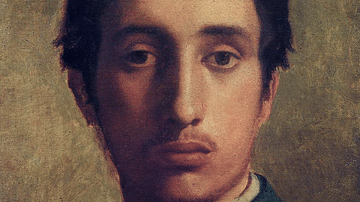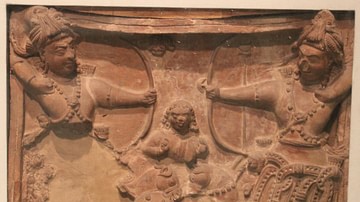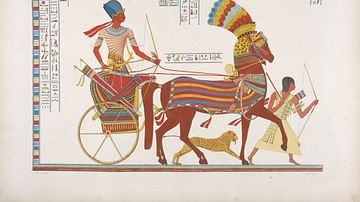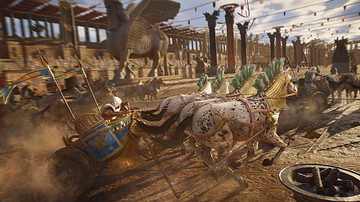Search
Search Results

Image
Charioteer in His Quadriga
Terracotta medallion depicting a charioteer in his quadriga, holding the victor's crown and palm branch, from the Rhône Valley, dated to the late 2nd or early 3rd century CE. In Rome, chariot racing was organized into teams, each identified...

Definition
Thor
Thor (Old Norse: Þórr) is the Norse god of thunder, the sky, and agriculture. He is the son of Odin, chief of the gods, and Odin's consort Jord (Earth) and husband of the fertility goddess Sif, who is the mother of his son Modi and daughter...

Definition
Surya
Surya (also known as Aditya) is the Hindu god of the Sun. He is considered the creator of the universe and the source of all life. He is the supreme soul who brings light and warmth to the world. Each day he travels across the sky in his...

Definition
Edgar Degas
Edgar Degas (1834-1917) was a French impressionist painter who used many different media to capture dancers, bathers, horse races, and scenes from Parisian café society. A keen photographer, Degas' paintings frequently show real-life captured...

Definition
Ancient Indian Warfare
War was the chief means by which territory was annexed or rulers defeated in ancient India, which was divided into multiple kingdoms, republics and empires. Often one empire predominated or different empires co-existed. The Vedic literature...

Image Gallery
Gallery of Chariots in the Ancient World
The chariot was the premier weapon of war in the ancient world for more than 700 years, and was adopted by empires such as the Hittites, Egyptians, and Assyrians. Chariots were used not only in warfare, but also for sport, particularly hunting...

Definition
Circus Maximus
The Circus Maximus was a chariot racetrack in Rome constructed in the 6th century BCE. Used for other events such as the Roman Games and gladiator fights, it last hosted chariot races in the 6th century. Partially excavated in the 20th century...

Definition
Ancient Olympic Games
The ancient Olympic Games were a sporting event held every four years at the sacred site of Olympia, in the western Peloponnese, in honour of Zeus, the supreme god of the Greek religion. The games, held from 776 BCE to 393 CE, involved participants...

Article
The Sun & the Moon in Norse Myth
In Norse mythology, the Sun and the Moon appear as personified siblings pulling the heavenly bodies and chased by wolves, or as plain objects. Written sources, such as the Poetic Edda and the Prose Edda, have surprisingly little to say about...

Article
Legacy of the Ancient Romans
The legacy of the ancient Romans – from both the time of the Roman Republic (509-27 BCE) and the time of the Roman Empire (27 BCE - 476 CE) – exerted a significant influence on succeeding cultures and is still felt around the world in the...